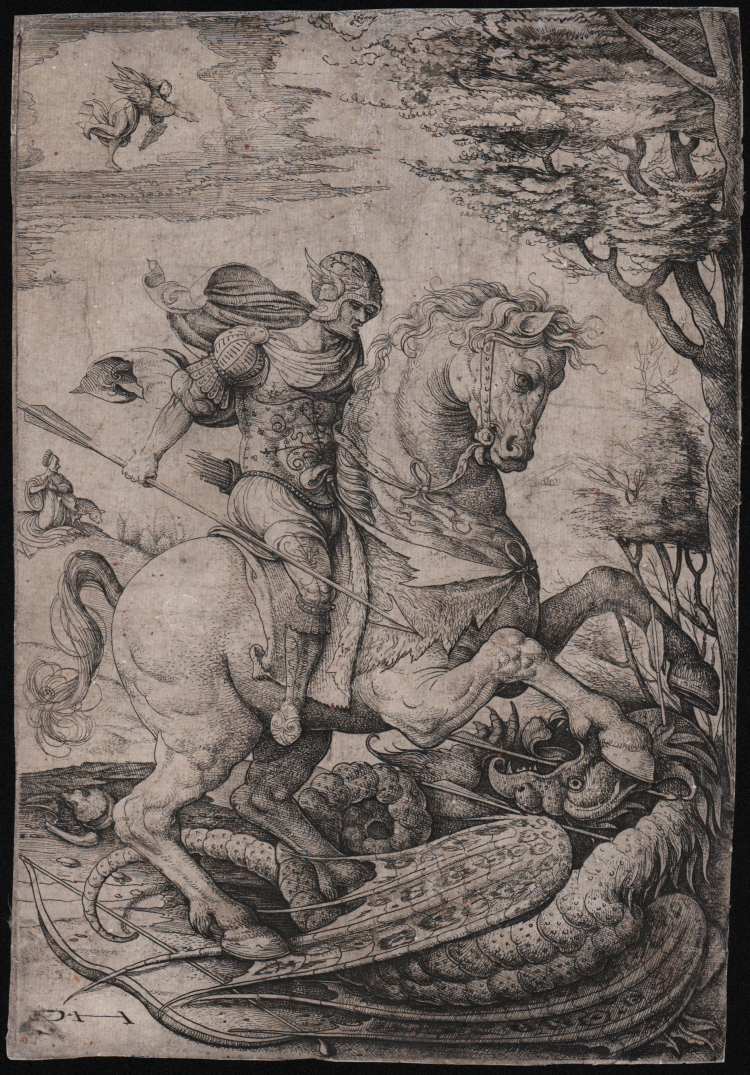



| Reference: | S39829 |
| Author | Daniel HOPFER |
| Year: | 1520 ca. |
| Measures: | 153 x 220 mm |


| Reference: | S39829 |
| Author | Daniel HOPFER |
| Year: | 1520 ca. |
| Measures: | 153 x 220 mm |
Etching on iron, 1520 circa, signed with monogram in the plate, lower left DH. First state, before the number 77 at lower left.
According to Hollstein possibly inspired by Raphael's Death of Heliodorus in the Stanza d'Eliodoro at the Vatican.
Magnificent proof, richly toned, printed on coeval laid paper, reconstructive restorations in the upper part of the sheet, overall, in good condition.
Rare work in this original version.
|
Bartsch, VIII.484.41; Hollstein, 47.I.
|
Daniel HOPFER (Kaufbeuren 1470 circa - Ausburg 1536)
|
In 1493 he gained rights as a citizen of Augsburg and was added to the city’s roster of painters and register of taxpayers. He married in 1497. Working in Augsburg during the city’s patronage as a leading humanist centre by Maximilian I, Hopfer was probably the first etcher of armour to pull impressions of etchings on paper. He was known as a designer of ornamental etchings that were applied to armour made in Augsburg, though it is not clear whether he actually etched on the armour; in most cases he probably handed his designs over to armourers who manually applied and etched the ornament. The one surviving piece of signed Hopfer armour, a shield, dates from the year of his death (1536; Madrid, Real Armeria).
|
|
Bartsch, VIII.484.41; Hollstein, 47.I.
|
Daniel HOPFER (Kaufbeuren 1470 circa - Ausburg 1536)
|
In 1493 he gained rights as a citizen of Augsburg and was added to the city’s roster of painters and register of taxpayers. He married in 1497. Working in Augsburg during the city’s patronage as a leading humanist centre by Maximilian I, Hopfer was probably the first etcher of armour to pull impressions of etchings on paper. He was known as a designer of ornamental etchings that were applied to armour made in Augsburg, though it is not clear whether he actually etched on the armour; in most cases he probably handed his designs over to armourers who manually applied and etched the ornament. The one surviving piece of signed Hopfer armour, a shield, dates from the year of his death (1536; Madrid, Real Armeria).
|